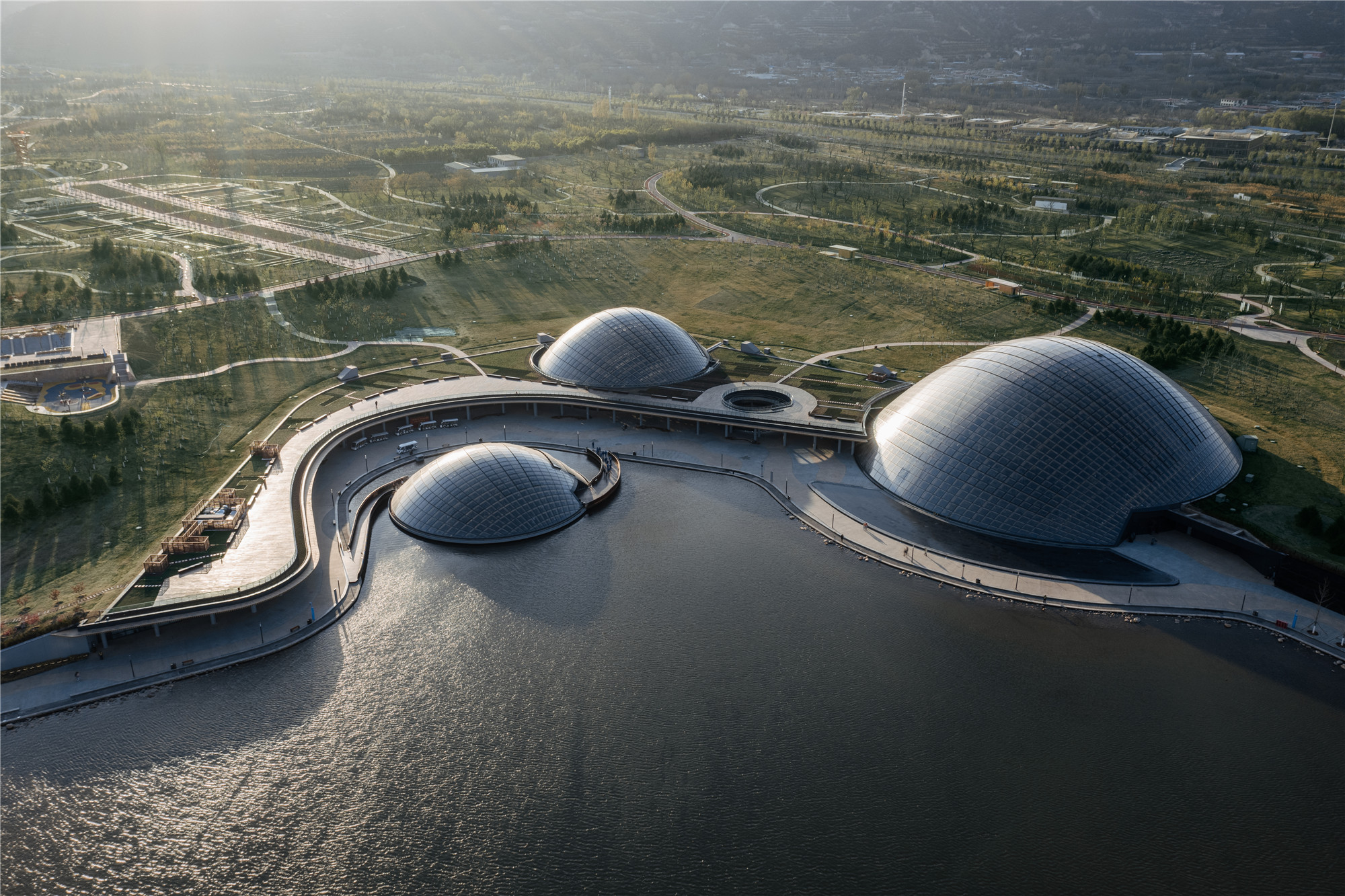
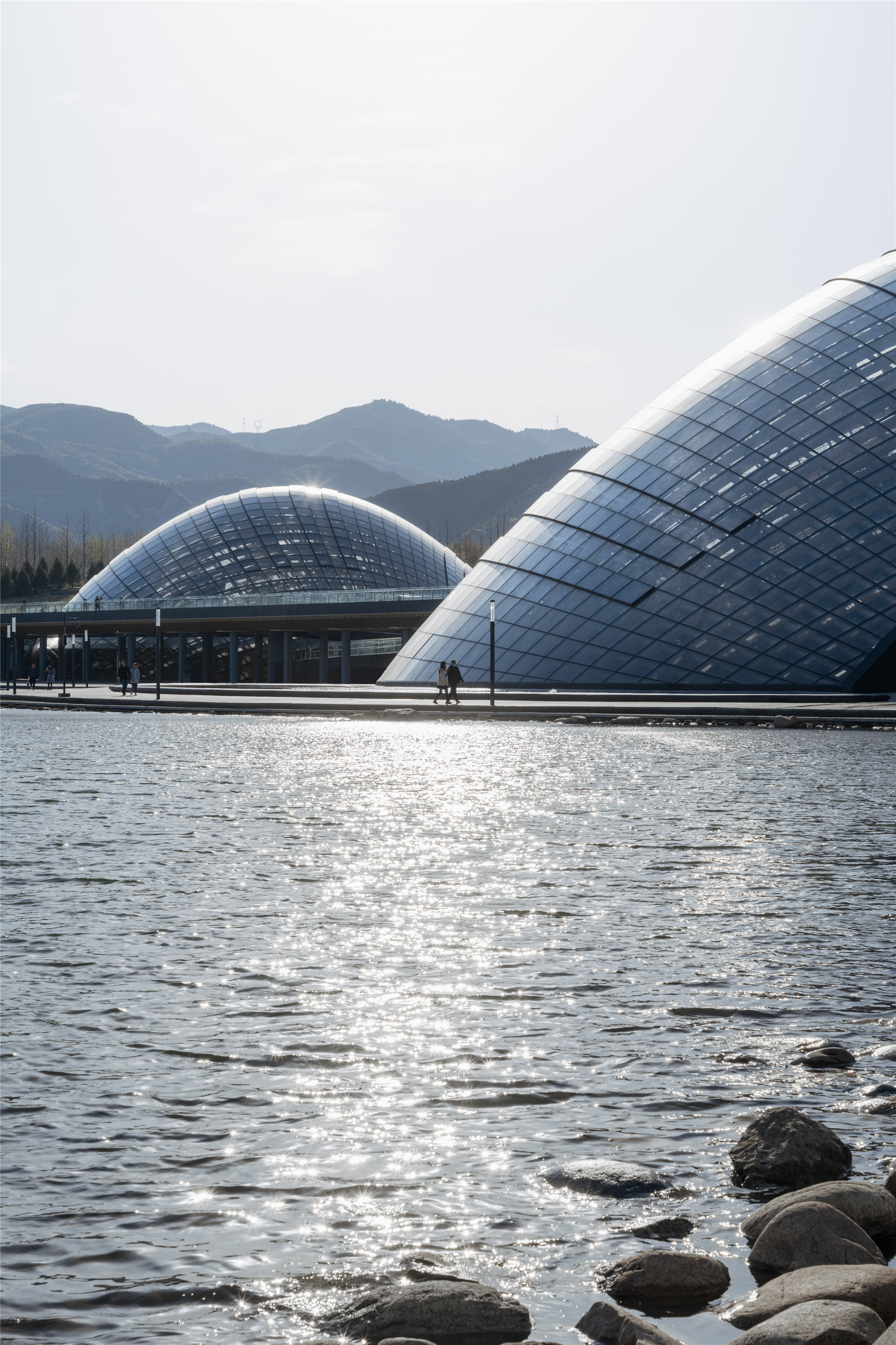
设计单位 Delugan Meissl Associated Architects
项目地点 山西太原
建成时间 2021年
建筑面积 5.46万平方米
设计在启动时希望将曾经的煤矿区改造成一处景观公园,它将不仅成为中国当下重要的景观设计类项目的典范,还将建立一处基础设施建筑,以用于研究及向公众的展示关于自然生态的知识。
The project was launched with the ambitious objective of transforming a former coalmining area into a landscape park, which is not only a model for the landscape design that is so essential in China, but also contains a building infrastructure that can be used for researching into and offering people access to and information about natural ecosystems.
▲ 视频介绍 ©DMAA
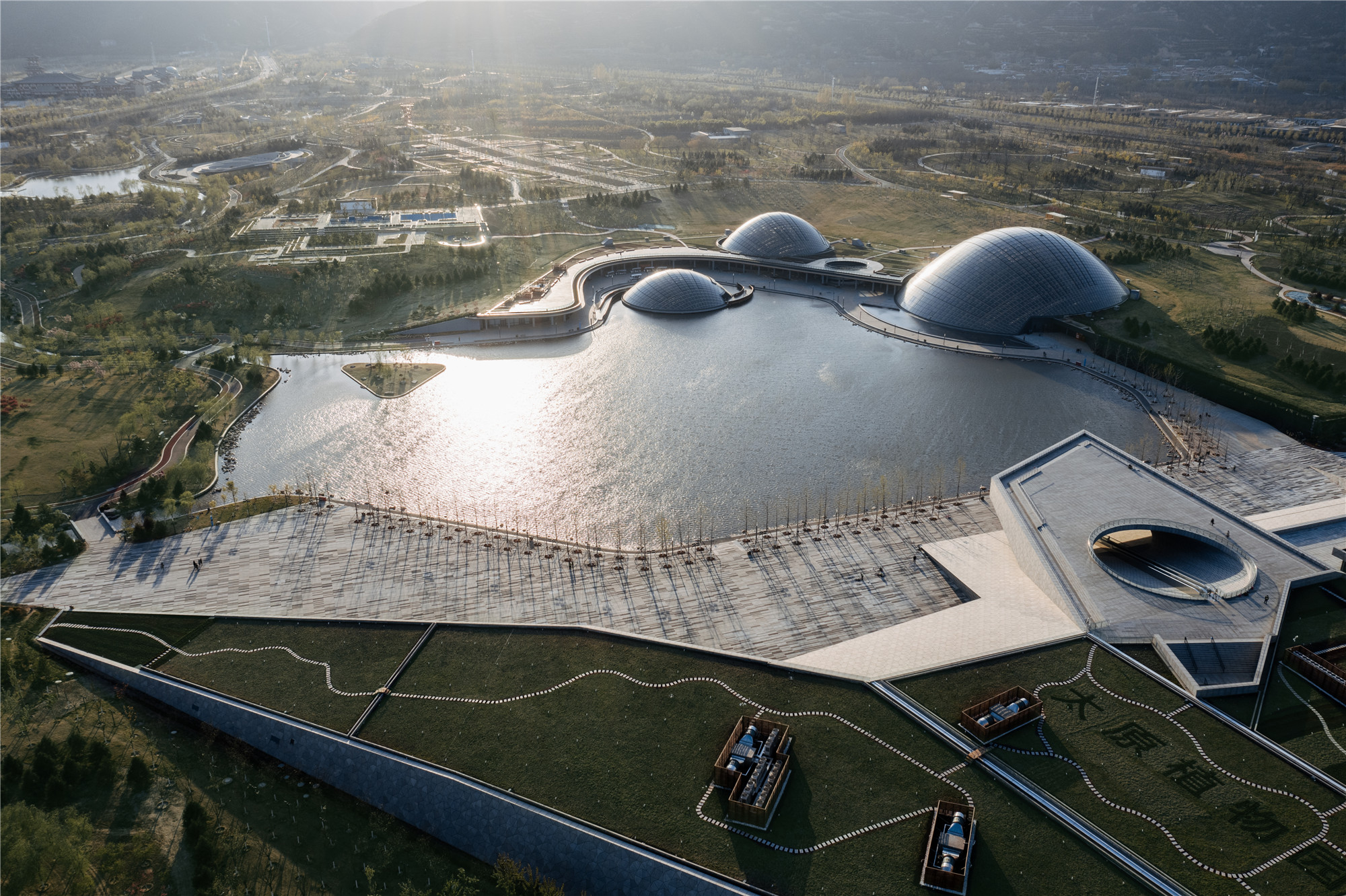
政府方希望可以在城市内部或周边地区创建高质量的休闲区,但要对前来游览的大量游客进行合理的控制,这些诉求也形成了空间规划的基础条件。设计不仅构建了一处景观公园,还建造了一座中央入口建筑,建筑内包括了一个自然博物馆及其管理设施。植物园内还有三个温室、一间餐厅、一个盆景博物馆,以及一个配有图书馆和宿舍的研究中心。
The politically stated need to create high-quality leisure areas in or close to cities and to find ways of controlling the resulting large numbers of visitors formed the basis for the definition of a spatial programme. This envisaged not only the creation of the landscape park itself, but also the construction of a central entrance building with a nature museum and administration facility, three greenhouses, a restaurant, a bonsai museum and a related research centre with a library and staff accommodation.
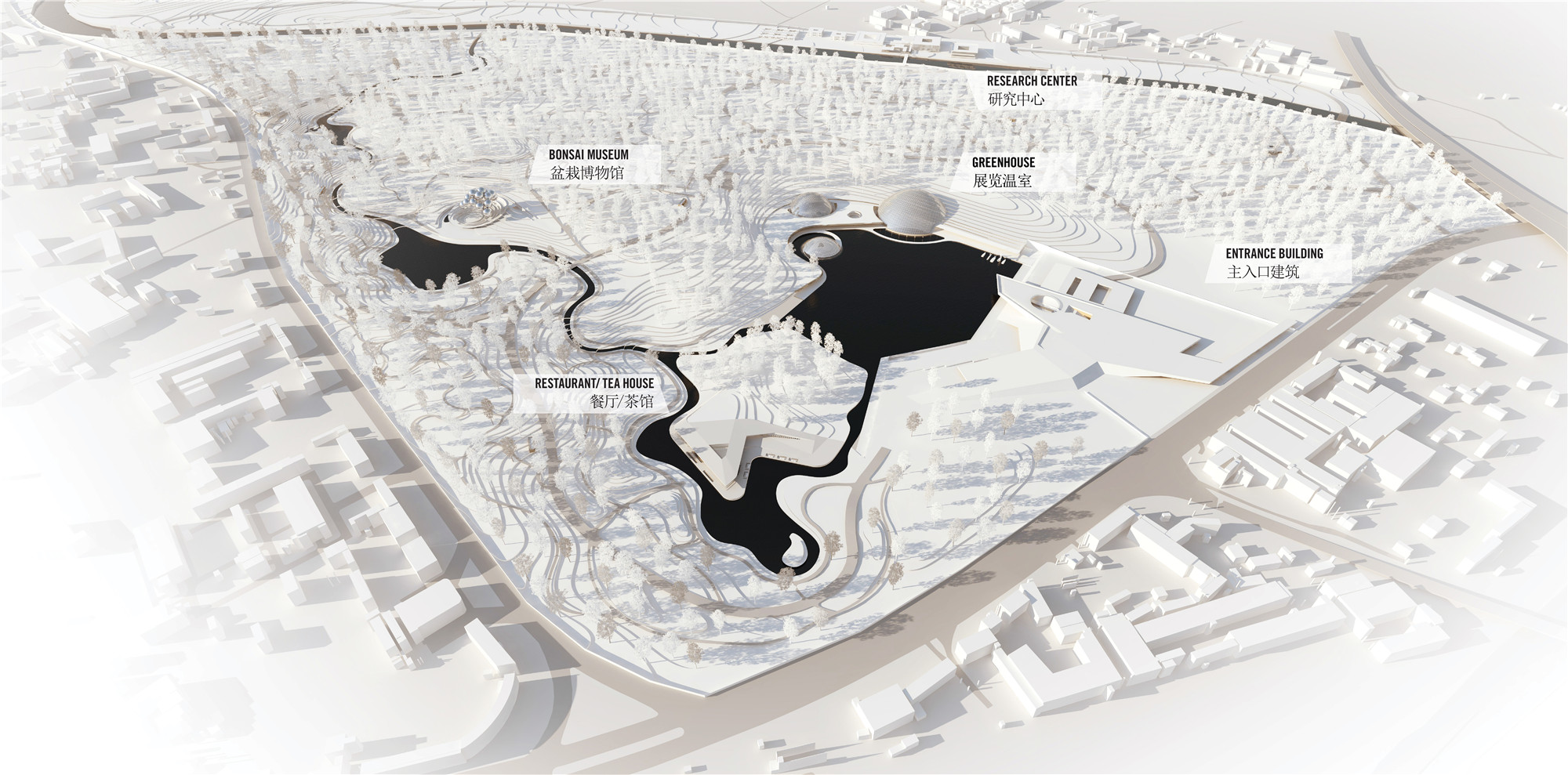

作为建筑核心部分的三个温室被精准地嵌入场地的地形中,它们被设计成三个半球形的木格栅穹顶造型。这些温室的建造需要将能源设计、热力学、结构完整性、幕墙,以及装配物流等领域的知识统合起来。三个穹顶中最大的一个自由跨度有90余米,是全球同类的木格栅结构建造中规模最大的。
The centrepiece of the buildings, which are very precisely inserted into the modelled topography, consists of three greenhouses, which were realised as three hemispherical timber lattice domes. The construction of these greenhouses required the pooling of technical knowhow in the areas of energy design, thermal performance, structural integrity and glazing as well as assembly and logistics. With a free span of over 90 metres, the broadest of the three domes is one of the largest such timber lattice structures worldwide.
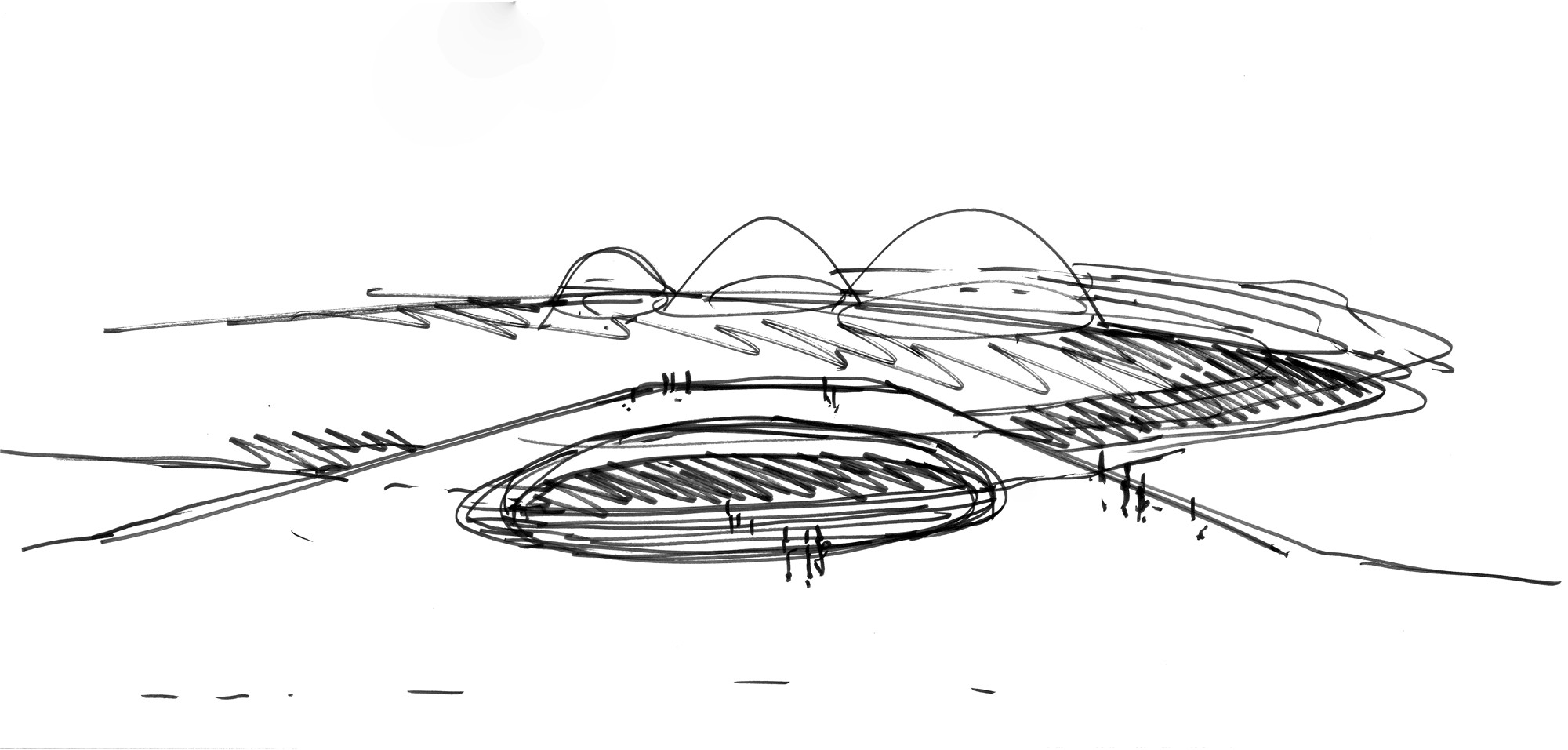

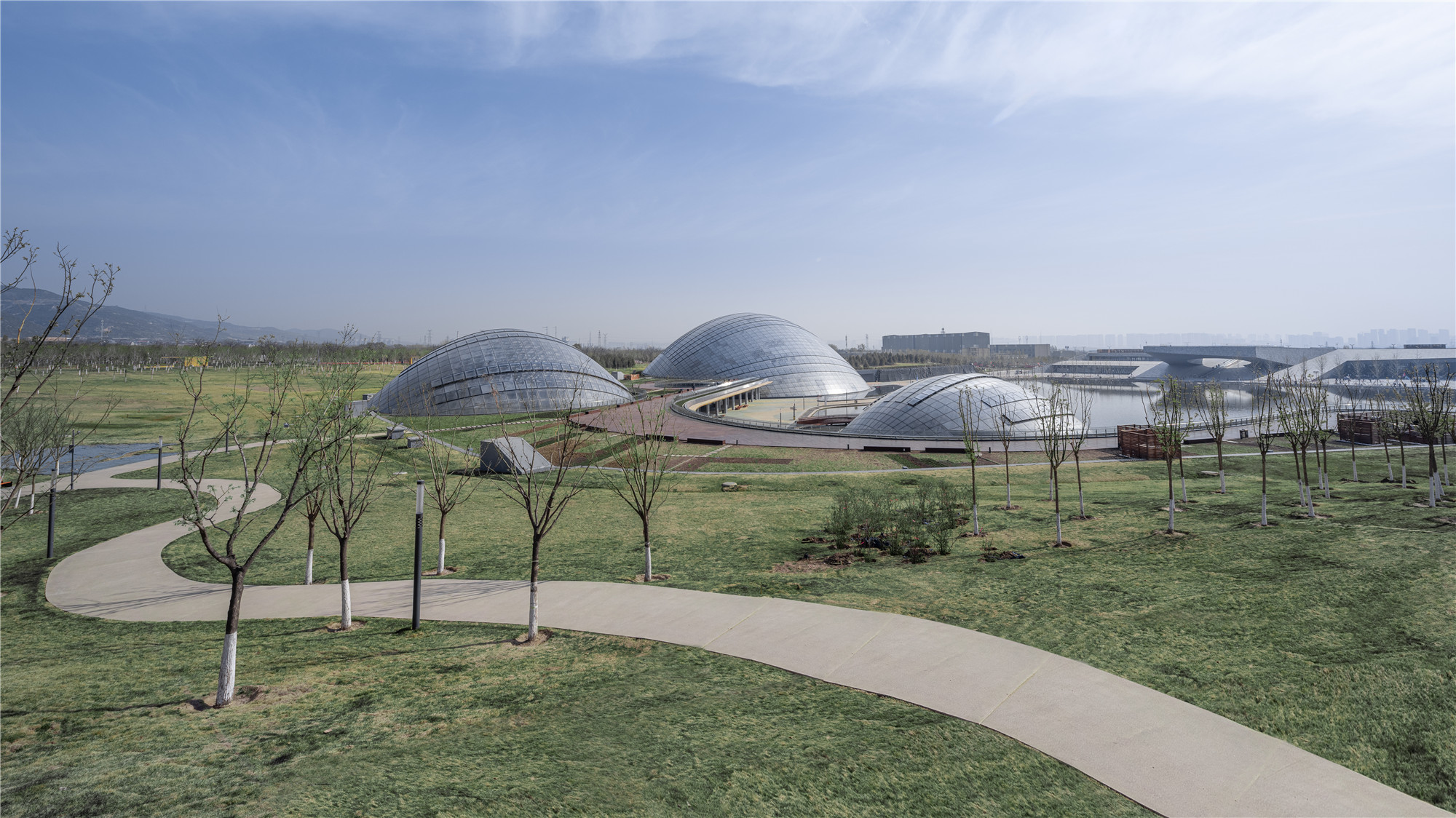
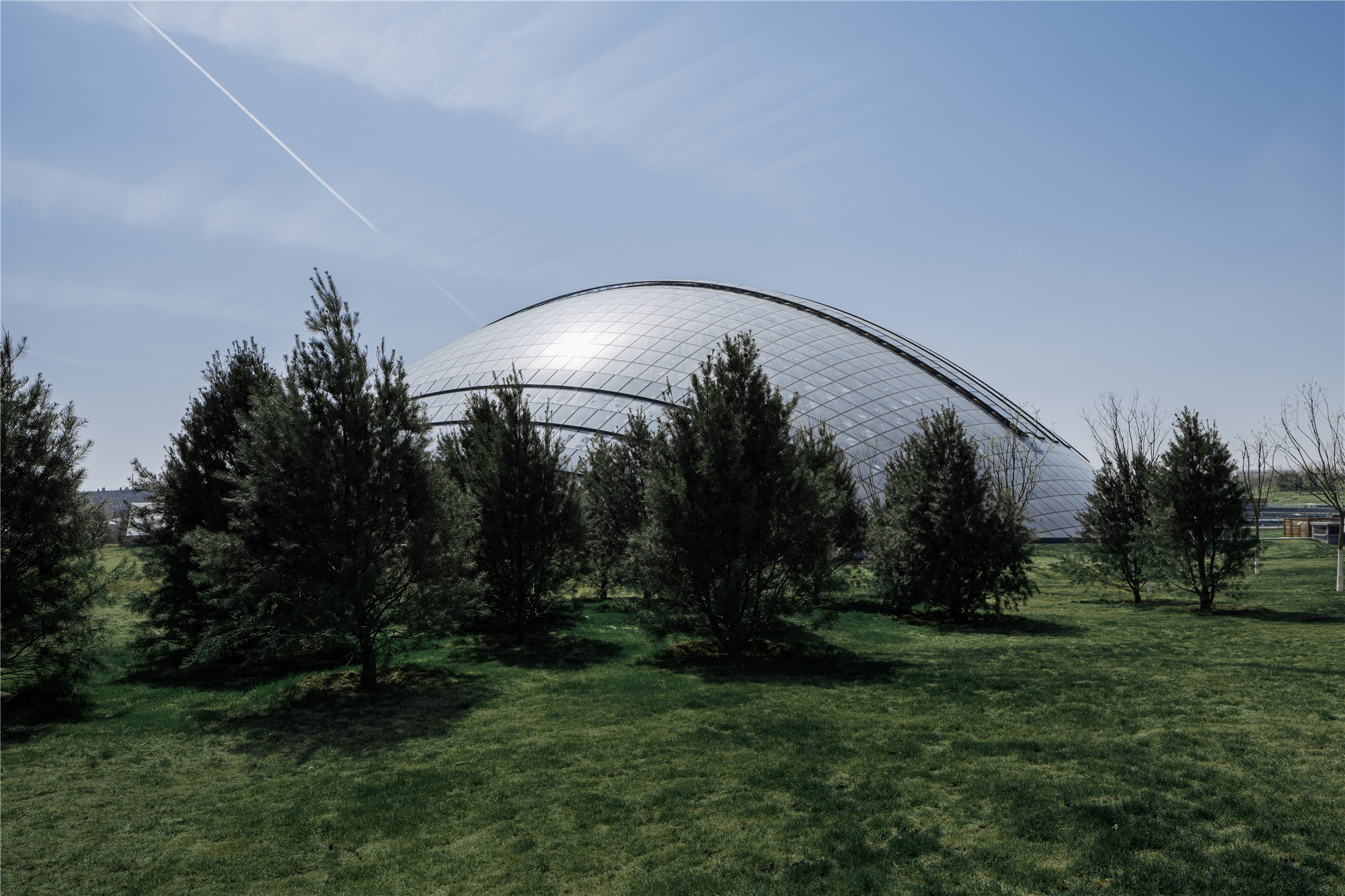
每个穹顶均由双曲面胶合木梁组成,排列成两层或三层的交叉结构。穹顶上也装有双曲面玻璃,部分窗扇可以开启。从上方俯瞰木构主梁,宛若贝壳般簇拥在场地的北侧,向南呈扇形展开,不同疏密的结构也创造出透光性的丰富变化,同时优化建筑的内部采光。通过对当地气候条件、结构内部的热性能需求、结构效率及可用的合理建造资源进行深入研究,设计团队实现了将生态足迹降至最低的愿景。
All three domes consist of double-curved laminated timber beams, which are arranged in two or three intersecting layers. The domes are glazed with double-curved panes of glass, some of which include openable windows. The main beams of the timber structures that, from above, resemble shells, are tightly bunched together on the north side of the base and fan out towards the south, creating a structurally varied translucency that optimises the solar gain. A detailed knowledge of local climatic conditions, the thermal demands inside the structure and the structural efficiency and availability of suitable constructional resources were key parameters for successfully minimising the ecological footprint.
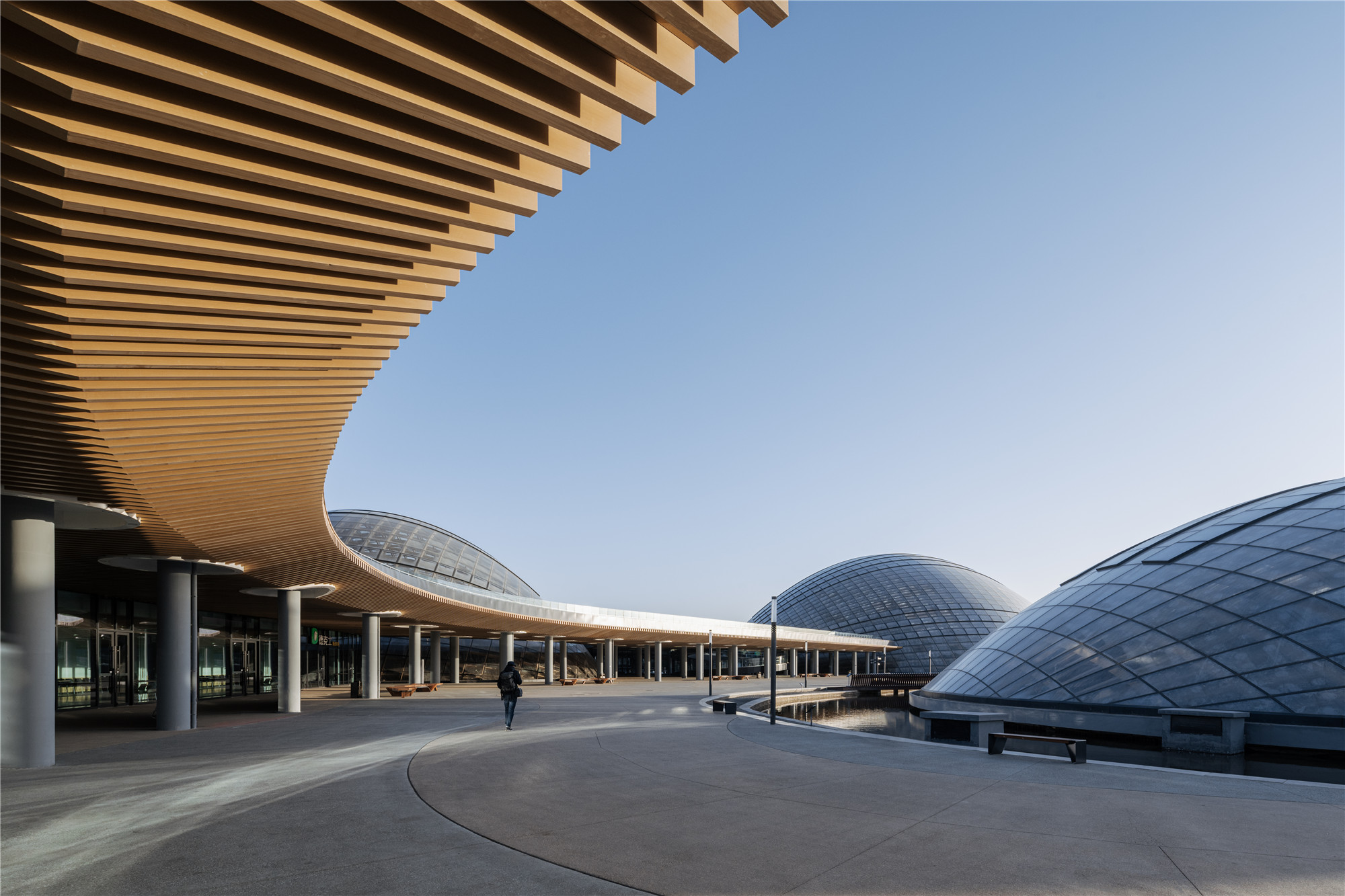

设计团队很早就决定在这个项目中尽可能广泛地使用木材,这一设计不仅提高了建造的预制率,还提升了安装质量,并对场地内潜在的历史关联展开探索。
DMAA’s very early decision to use timber as widely as possible in this project permitted not only extensive prefabrication but also a high quality of execution, while also opening up a rich seam of potential historical associations.
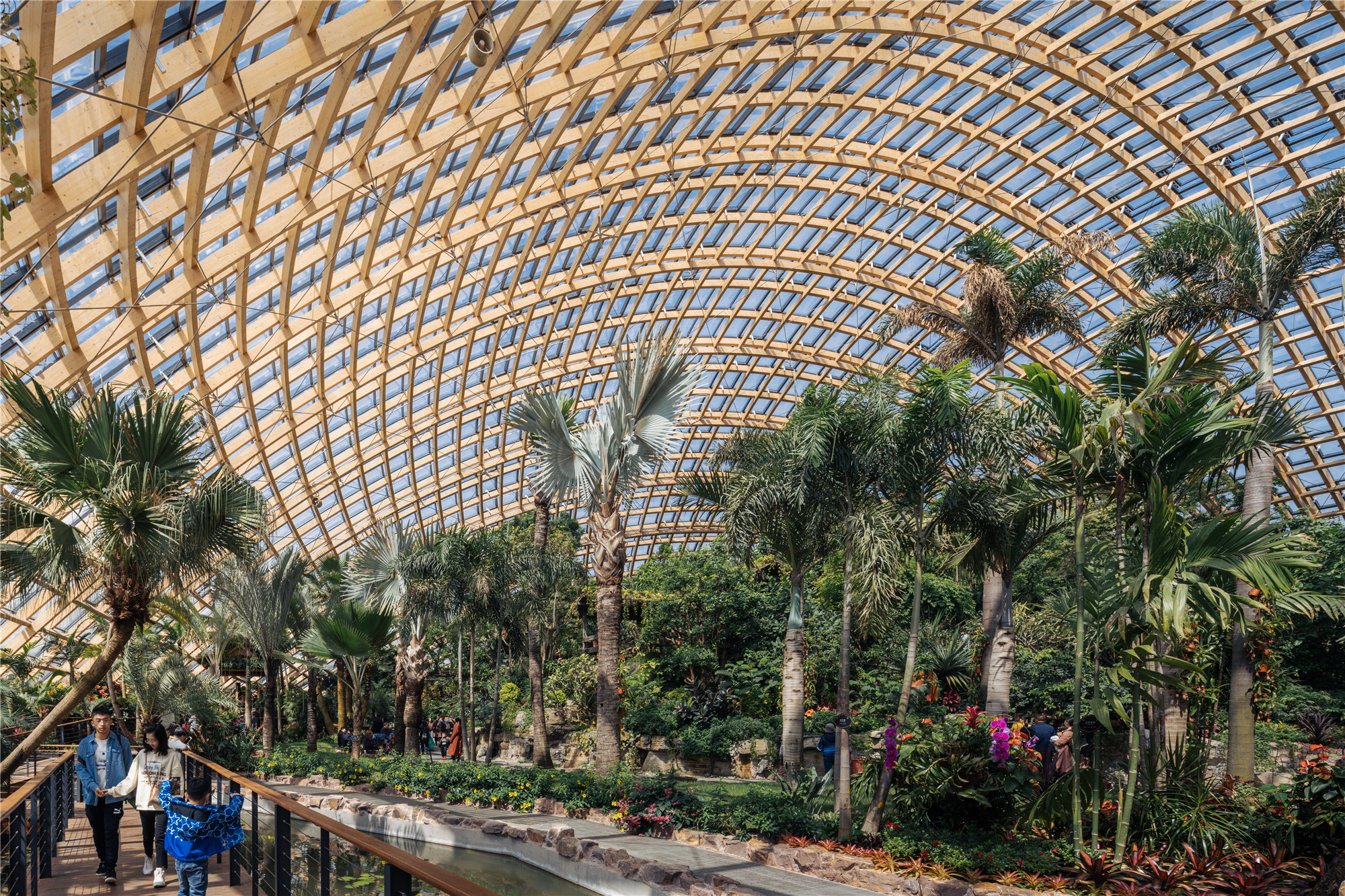
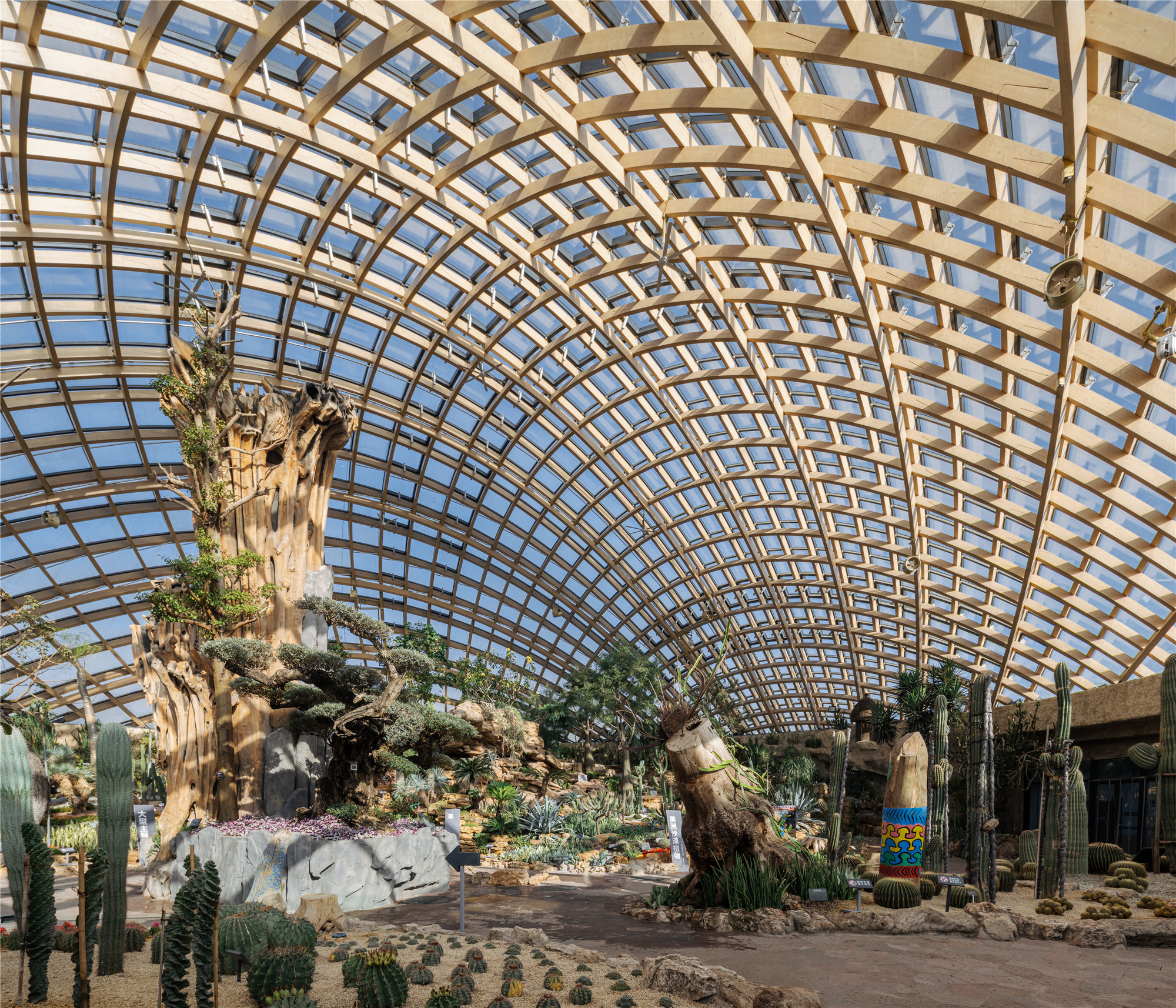
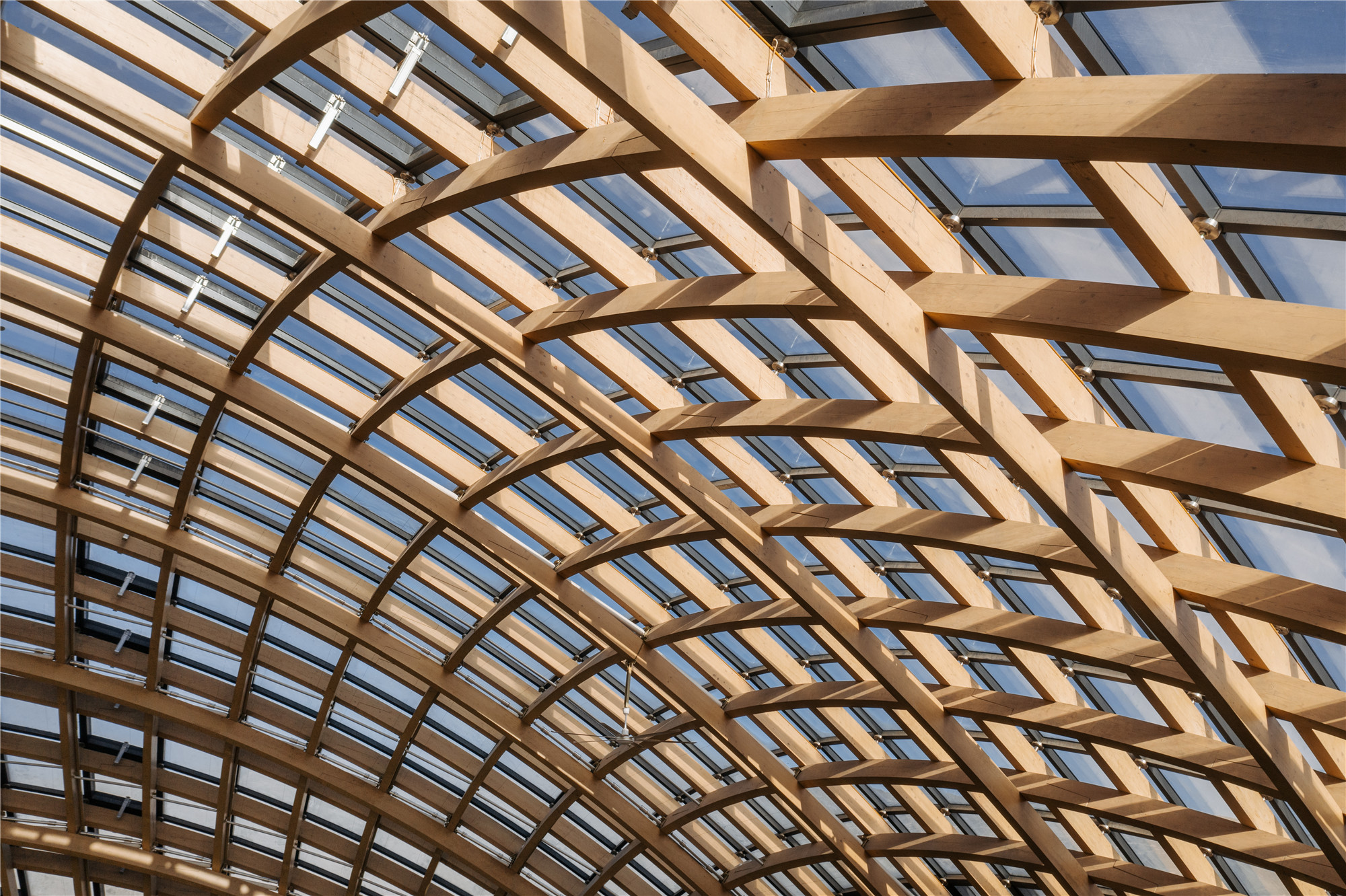
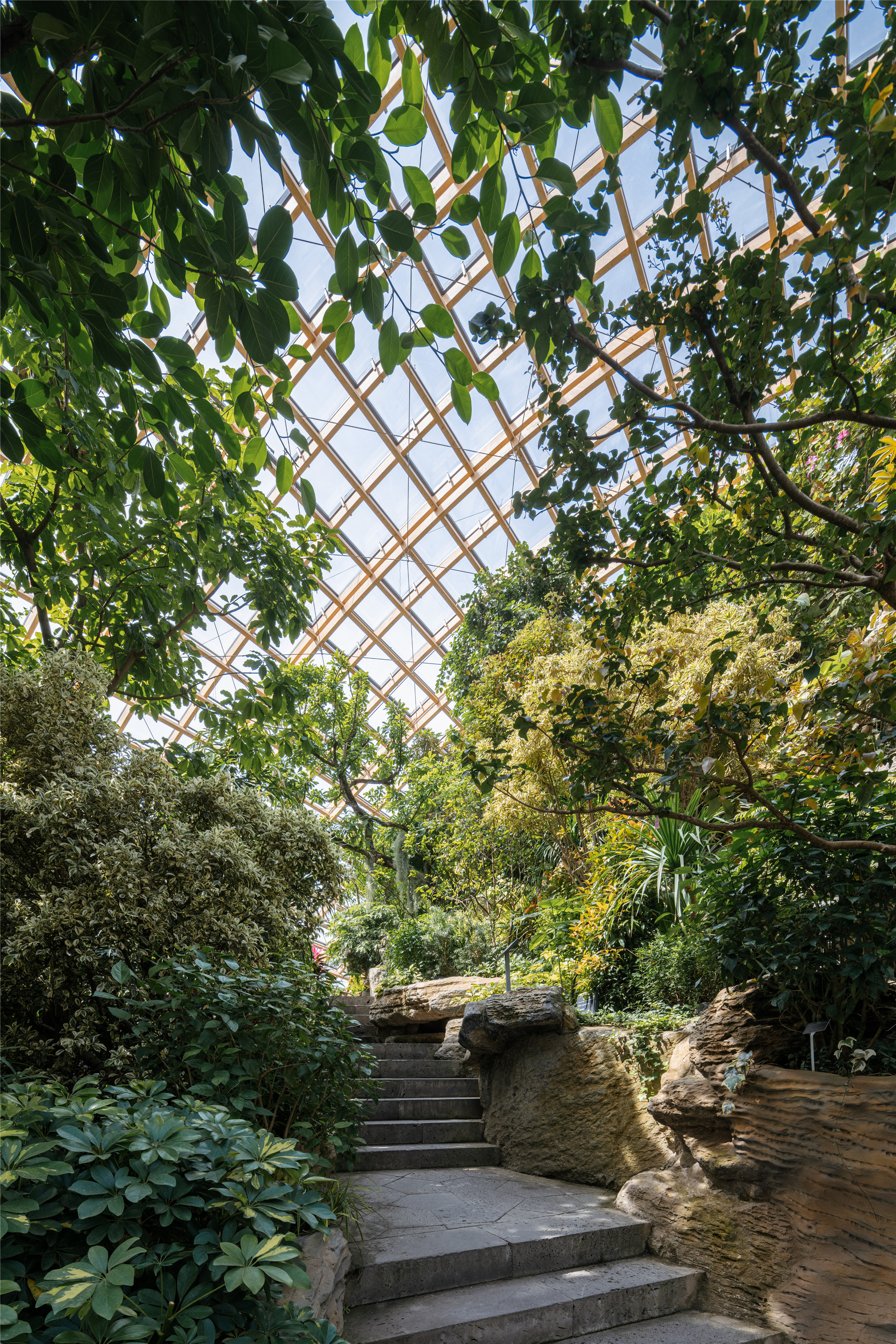
入口建筑可以通过大庭院中的一条通径进入,这条通径也引导着游客穿过圆形洞口下的开放楼梯到达一处宽敞的屋顶露台,游客可以在此一览整个公园的景致,而此刻建筑也突破自身的单一属性,成为广袤景观的元素之一。悬挑出的观景平台耸立于公园中心的水面之上,将游客引向植物园的三个温室。
The entrance building, which is approached from the access road via a large courtyard, leads visitors via an open stair that passes through a circular opening in the slab onto a huge roof terrace, from which they can oversee the entire park and become aware of the building’s twin function as an interface between architecture and landscape. The cantilevered viewing platform soars above the area of water at the heart of the park and directs visitors towards the three greenhouses in the botanical gardens.
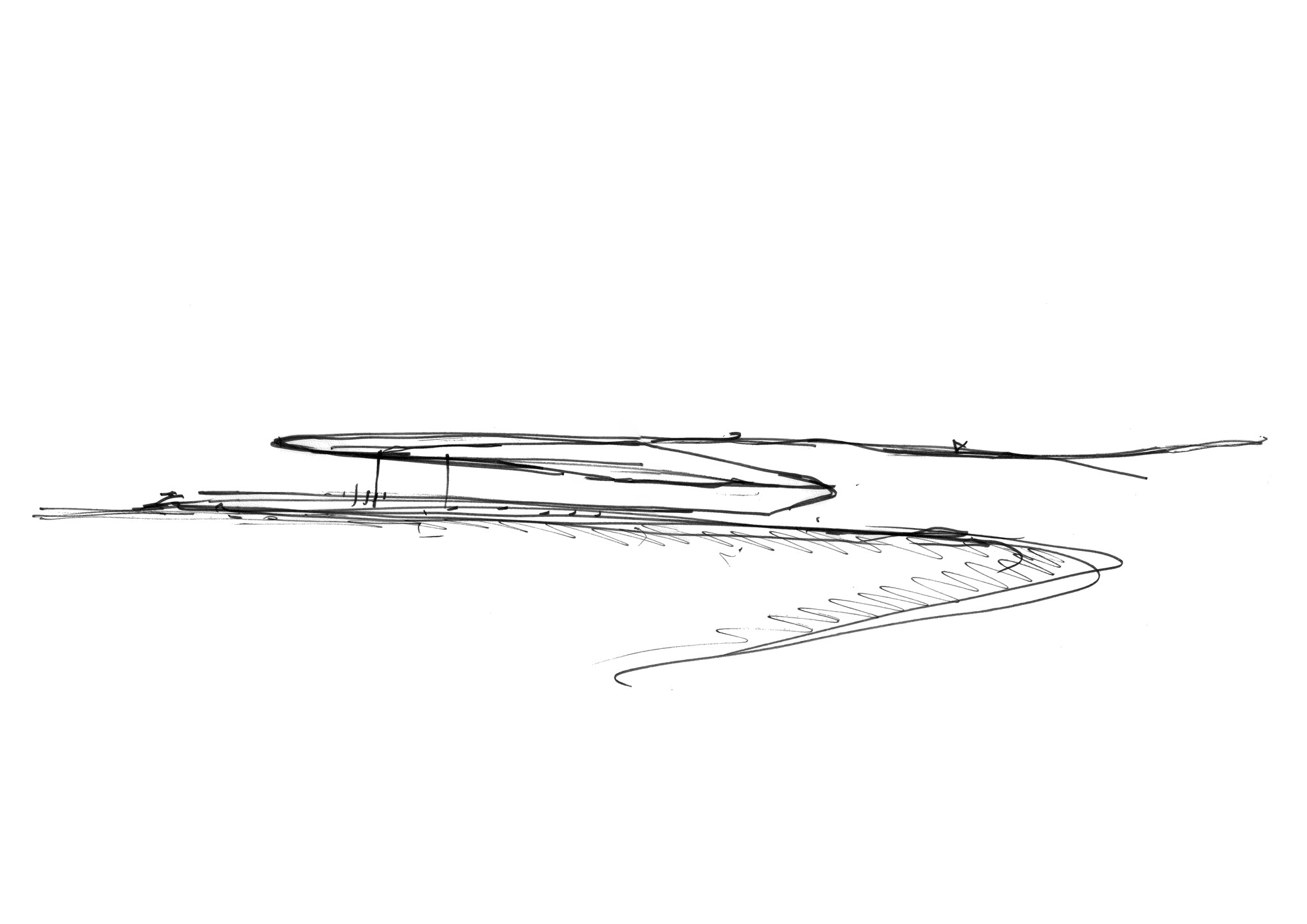


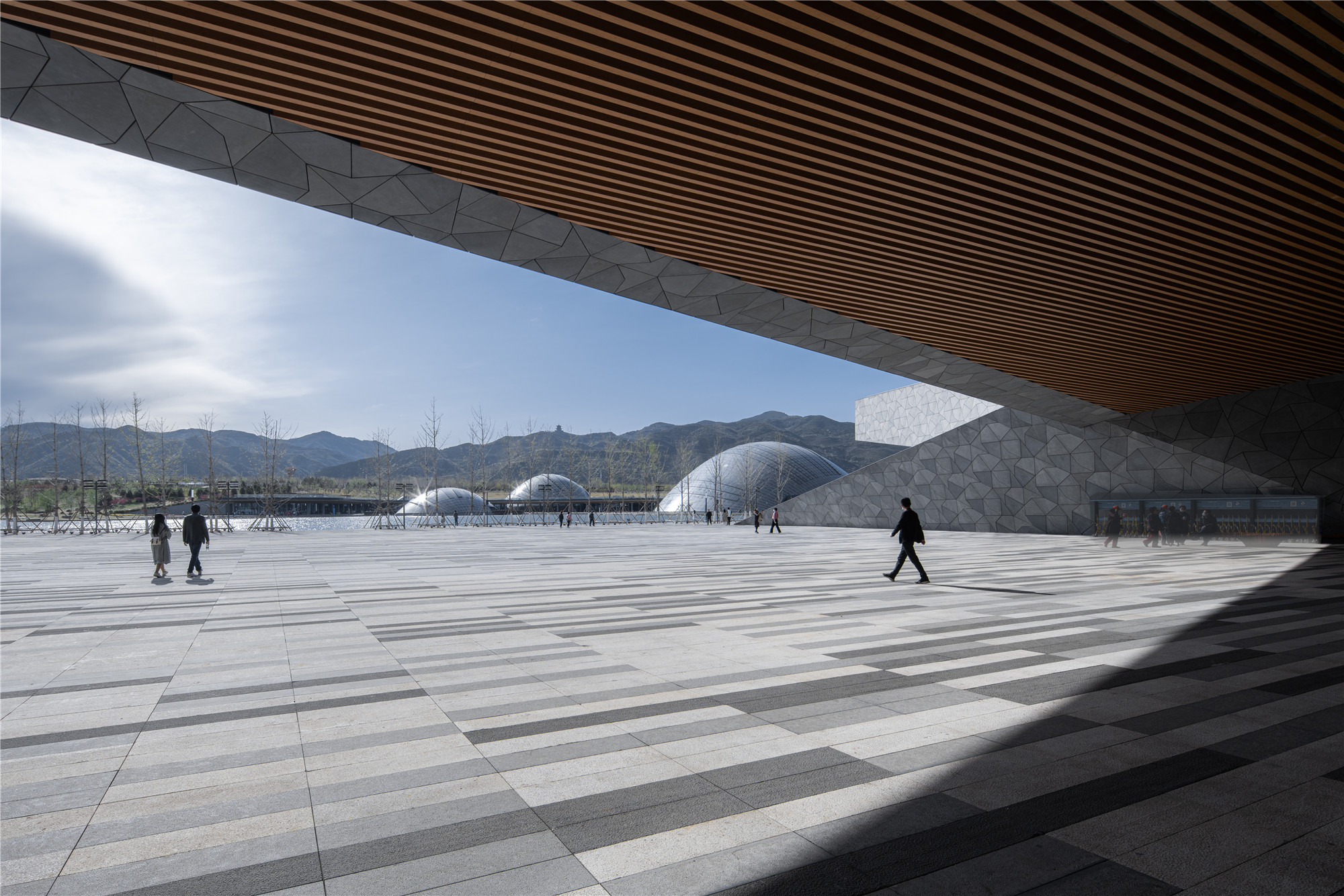
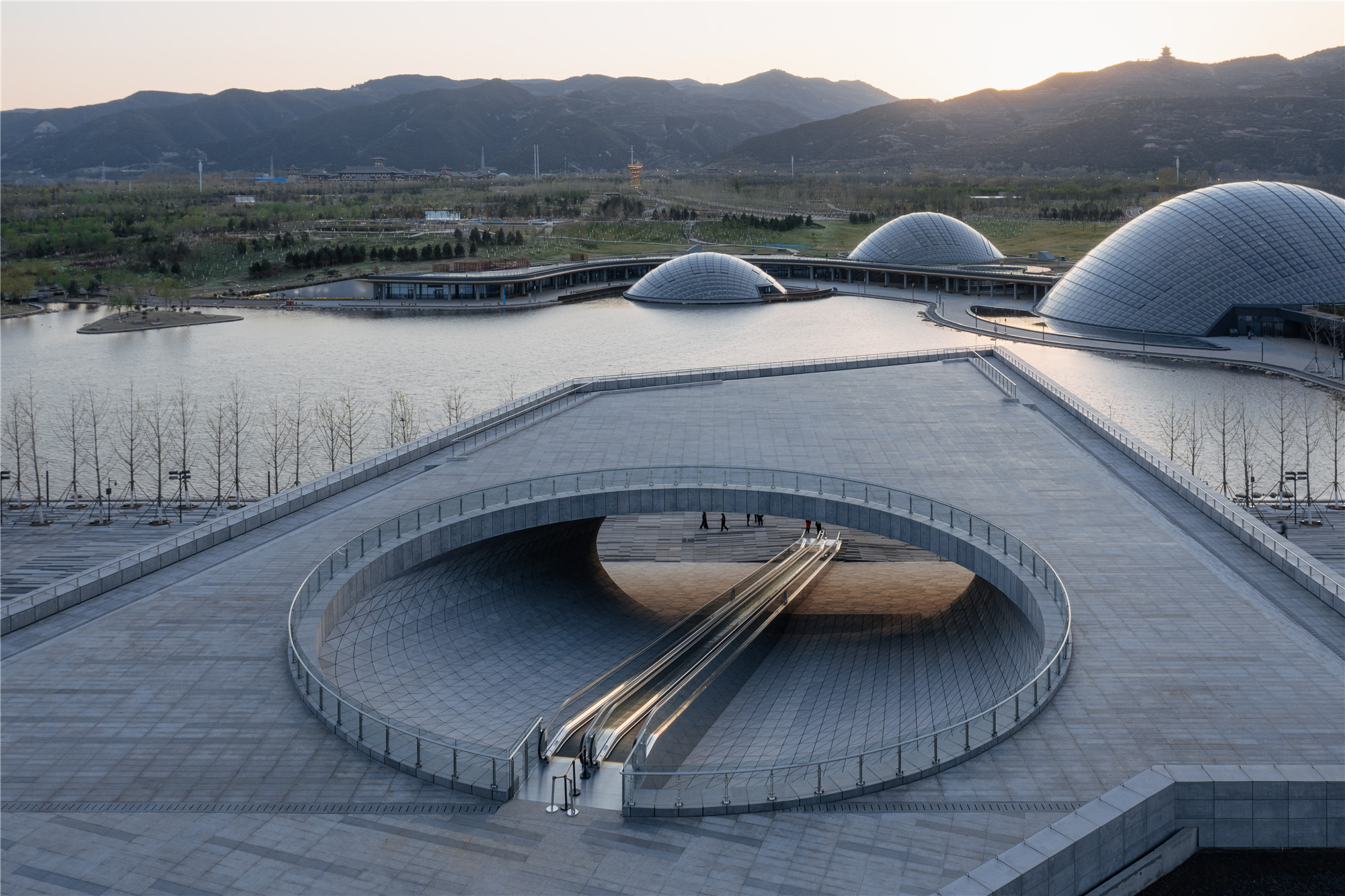
盆景博物馆以梯田般的同心圆进行布置,成为展示东方传统园林艺术的建筑载体。游客行进的路径也体现着对自然景观的改造。同温室壮观的穹顶一样,盆景博物馆的基座也与地形及水面产生着动态的关联反应。
The terraces of the bonsai museum, which are laid out in concentric circles, provide the constructional framework for this precise presentation of an ancient Far Eastern aspect of Garden Art. The path taken by visitors reflects the principle of a domesticated natural landscape. Just like the mighty domes of the greenhouses, the base of the bonsai museum also reacts dynamically with the modelled topography of the landscape and the surface of the pool.
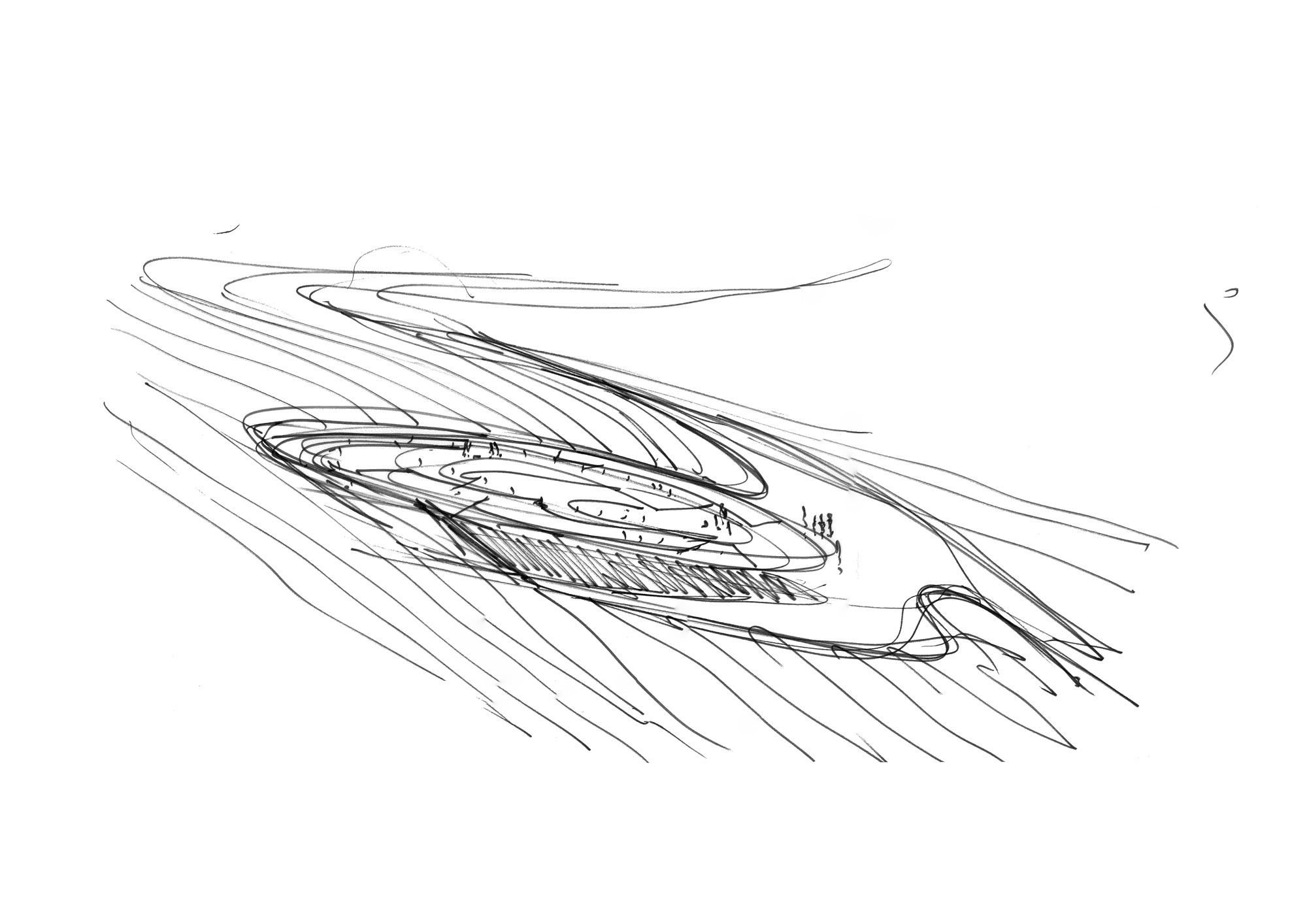
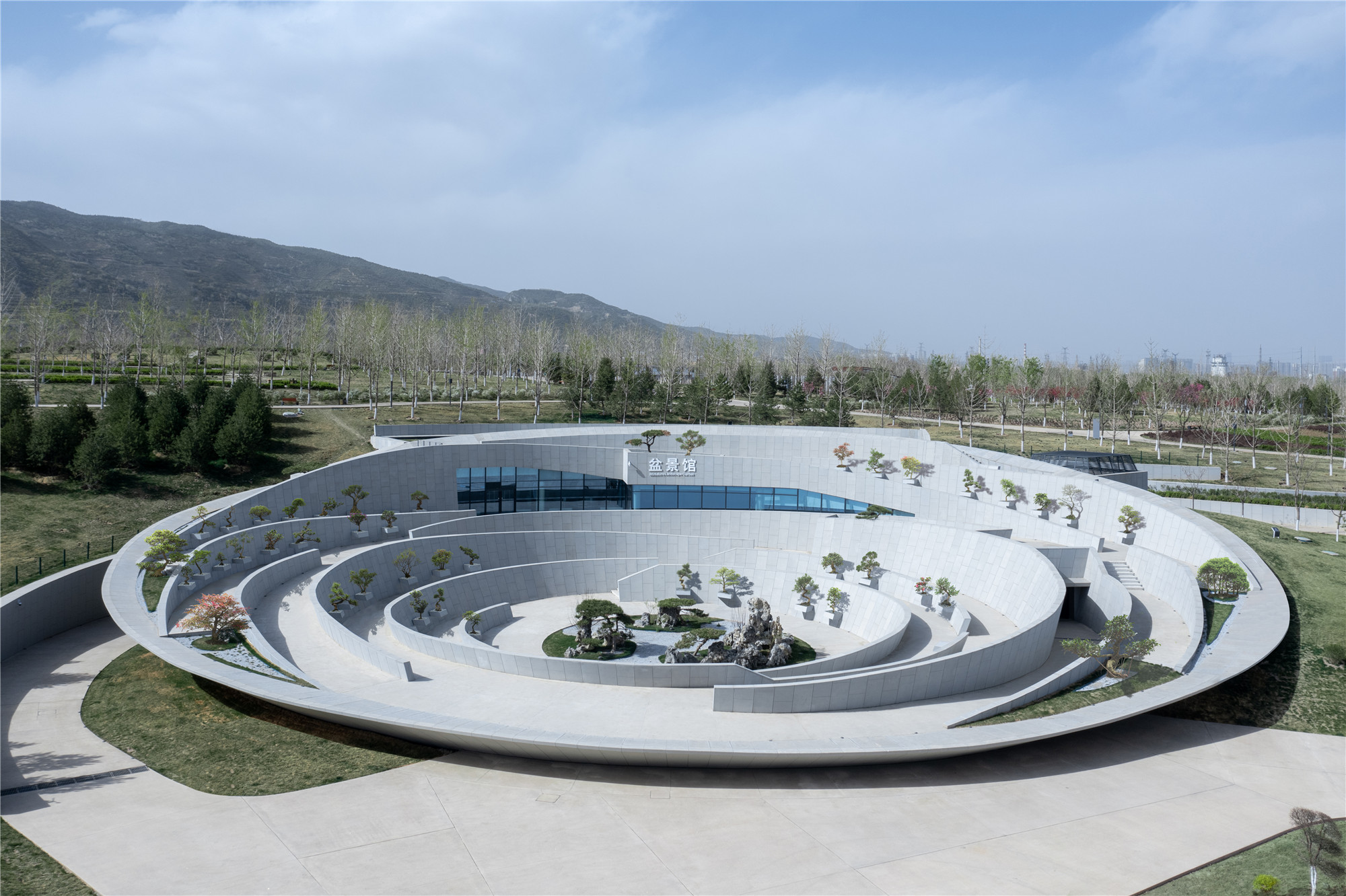

研究中心则包括了研究、办公、会议讲演和阅览空间,这些空间被分解成大小不一的体量,通过底层的一个公共空间联为一体。
The research centre contains laboratories, studios, office buildings, workshops, meeting rooms, lecture rooms and a library and is broken down into a number of pavilions of different sizes, which are linked together by a common connecting block at ground floor level.
整体设计的结构表现也基于中国传统的木结构屋顶,通过对结构与几何逻辑进行重新演绎来体现这一构想。餐厅和茶馆就是关于交错堆叠承重体系的理想阐释,通过增加或减少靠近支撑点或外缘的层数来创造阶梯状的尺度变化,巧妙控制结构与空间之间的比例关系。
The sculptural articulation of the overall concept is based on traditional Chinese timber roof structures, which it attempts to do justice to by reinterpreting their structural and geometrical logic. The restaurant and tea house is a perfect example of the application of the principles of piled and interwoven load-bearing layers, of creating steps and scale by adding or removing layers close to supports or edges and of playing with proportional relationships between structure and space.

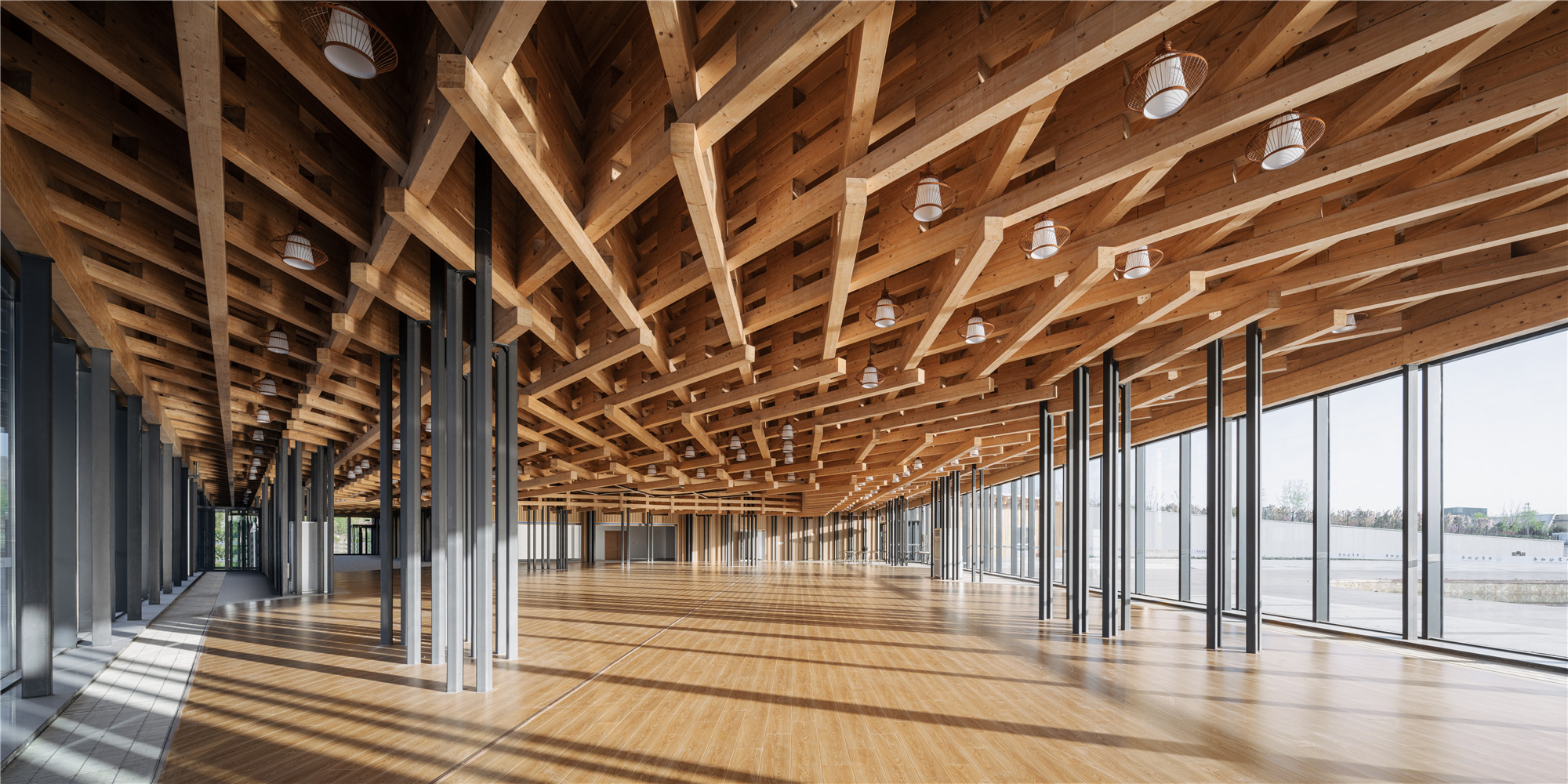
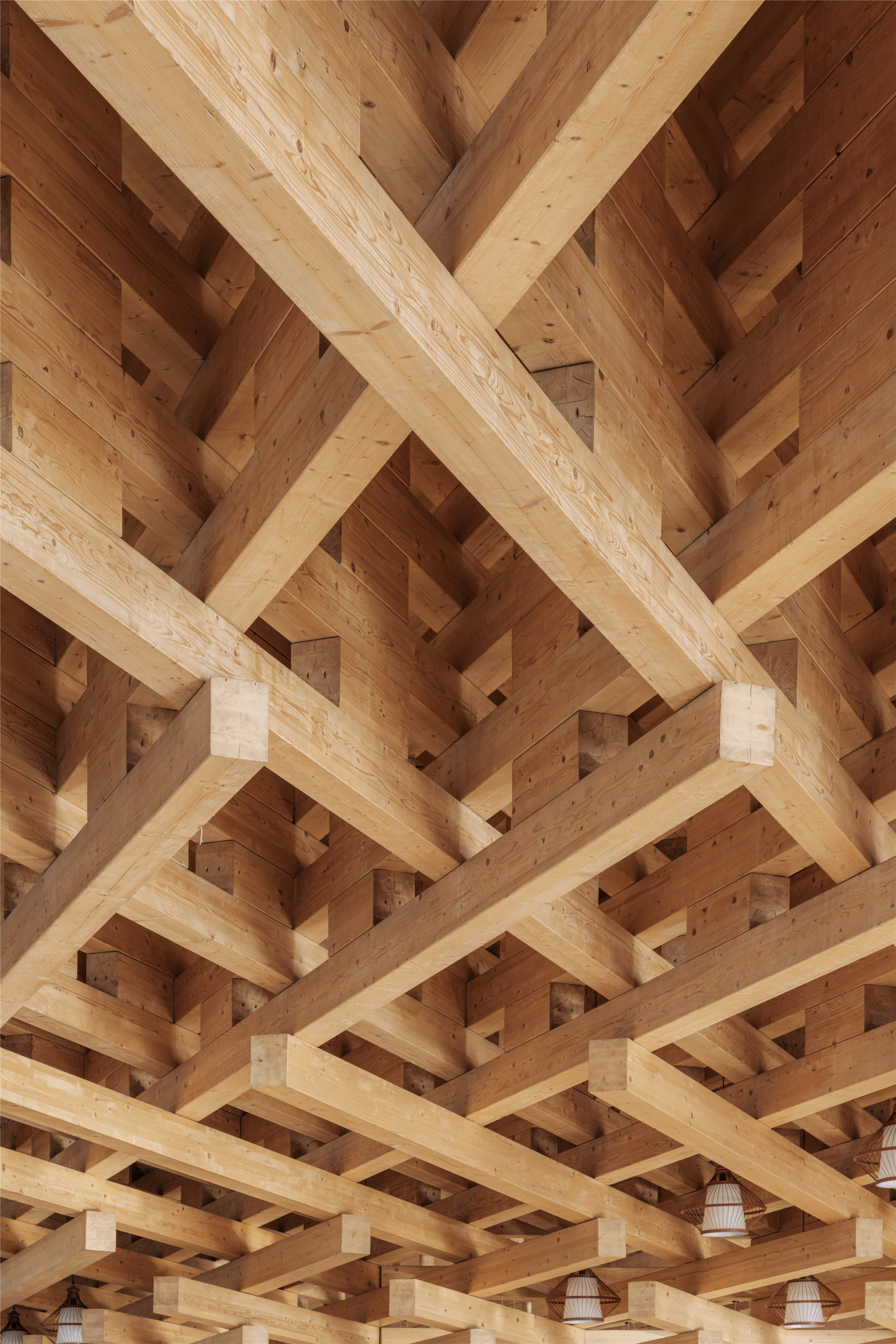
建筑内外之间的持续对话,以及建筑与景观间的巧妙衔接,都体现在景观公园的结构造型上,并与建筑作为基础设施的功能有机地融合。
The constant dialogue between inside and outside and the architecturally subtle articulation of the interface between architecture and landscape are reflected in the sculptural modelling of the landscape park, which merges organically with the built infrastructure.
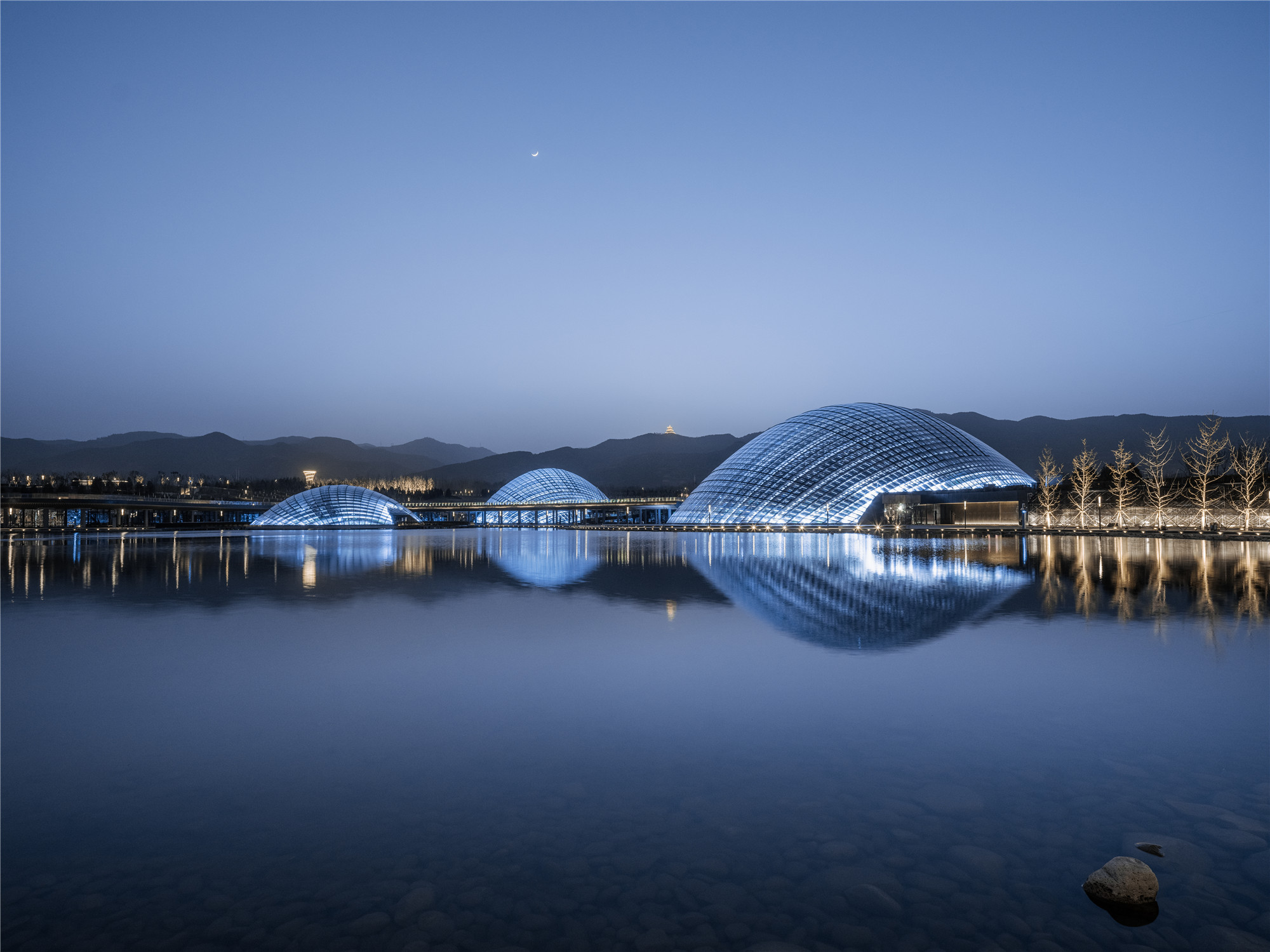
设计图纸 ▽
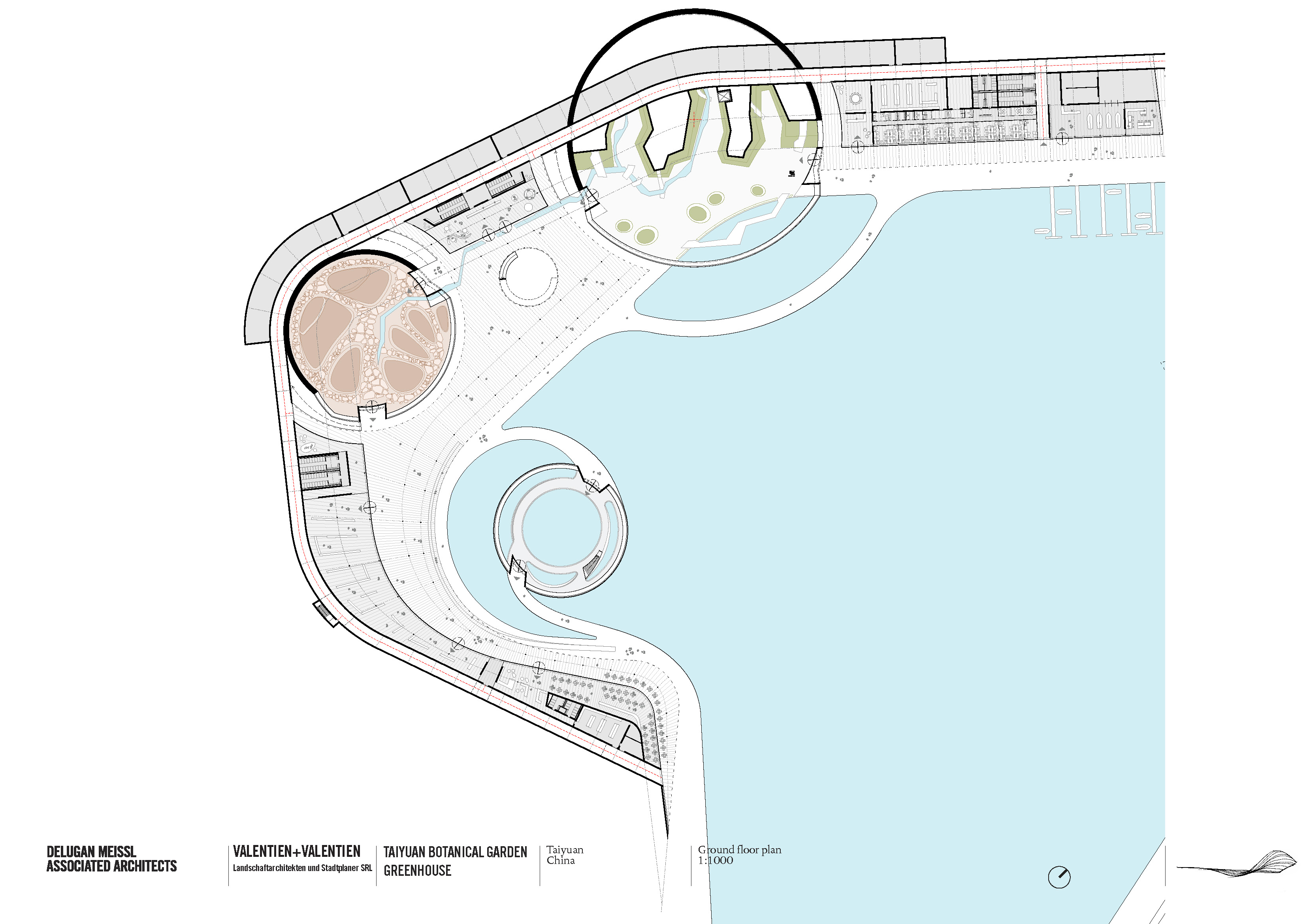

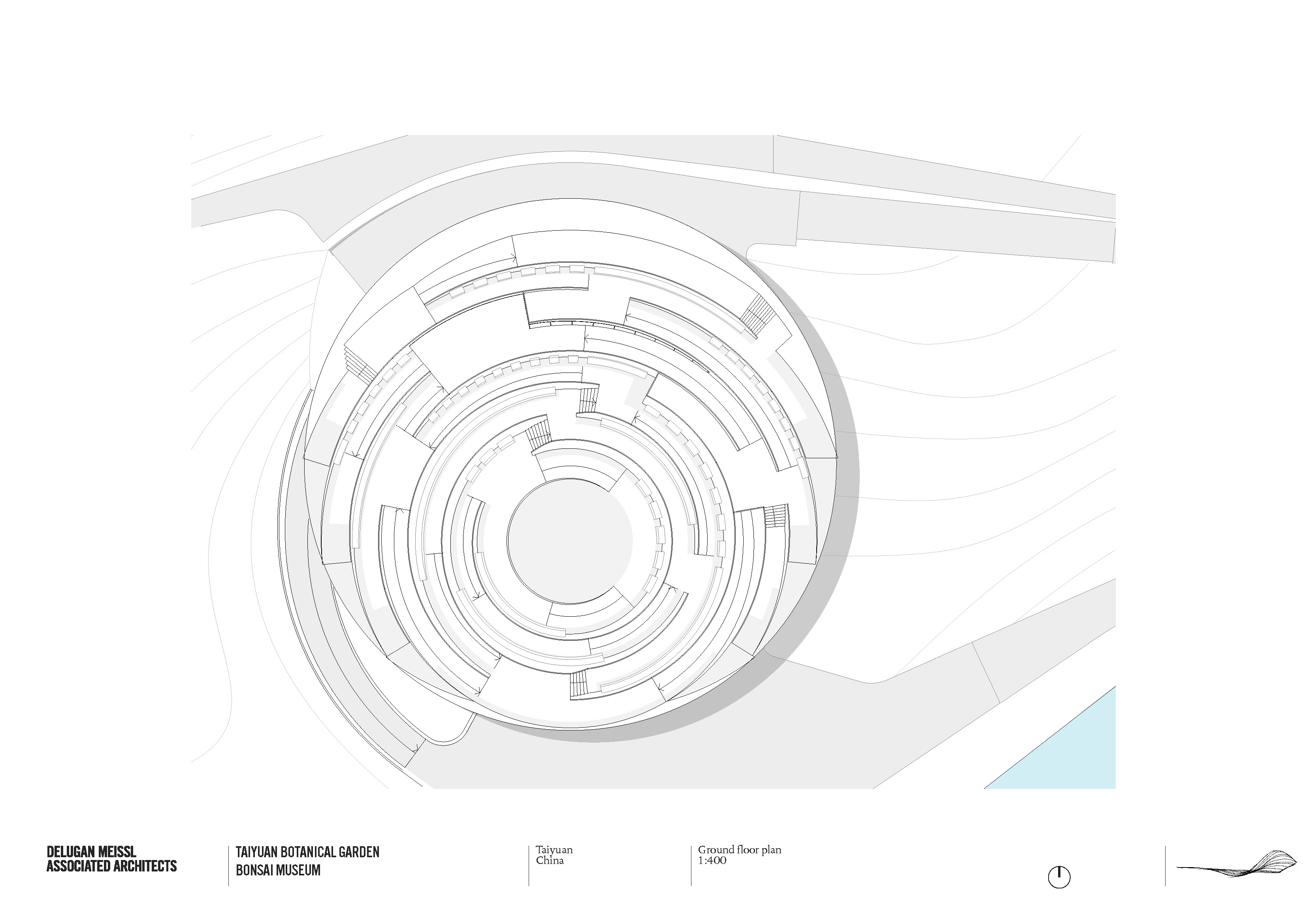
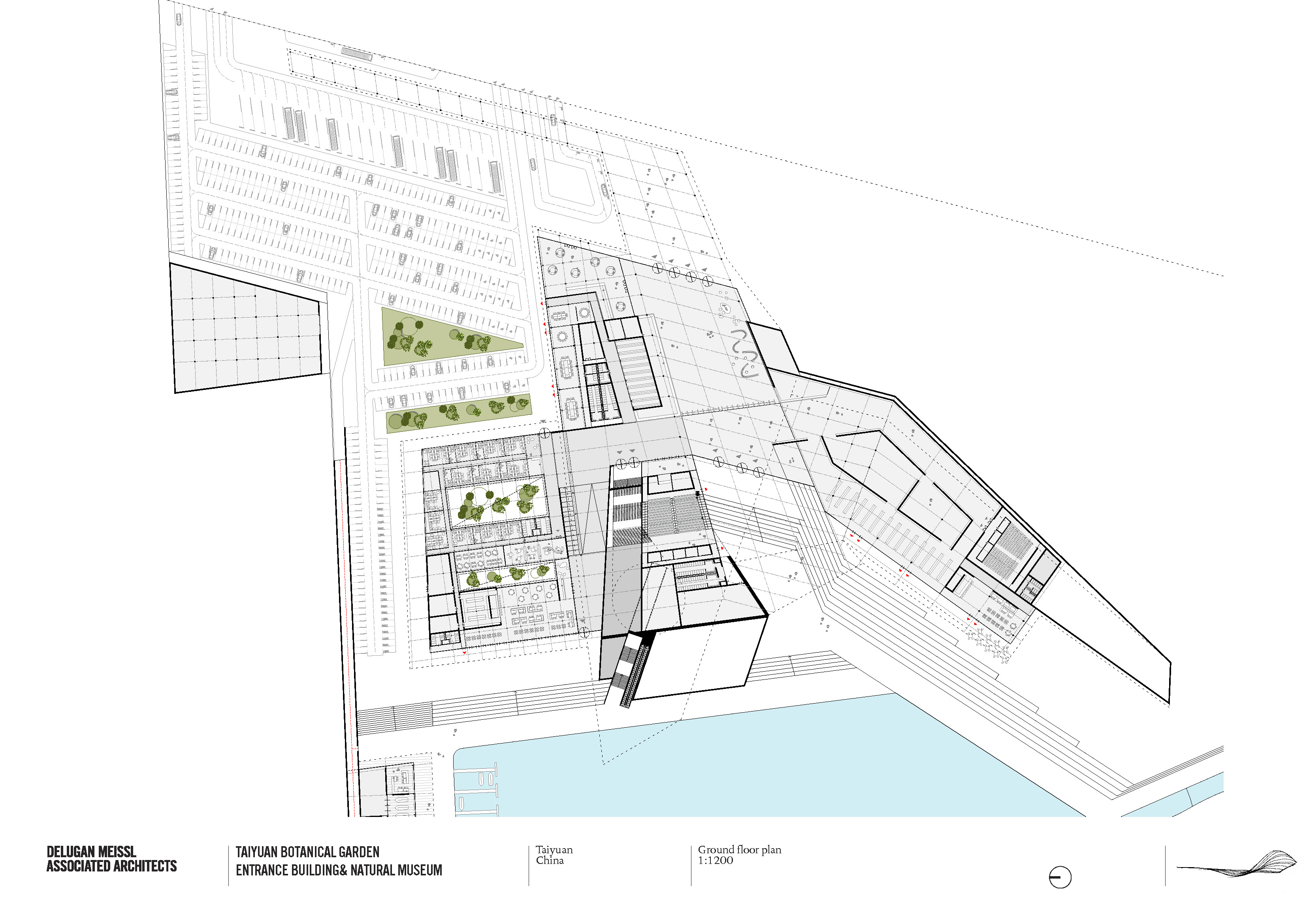
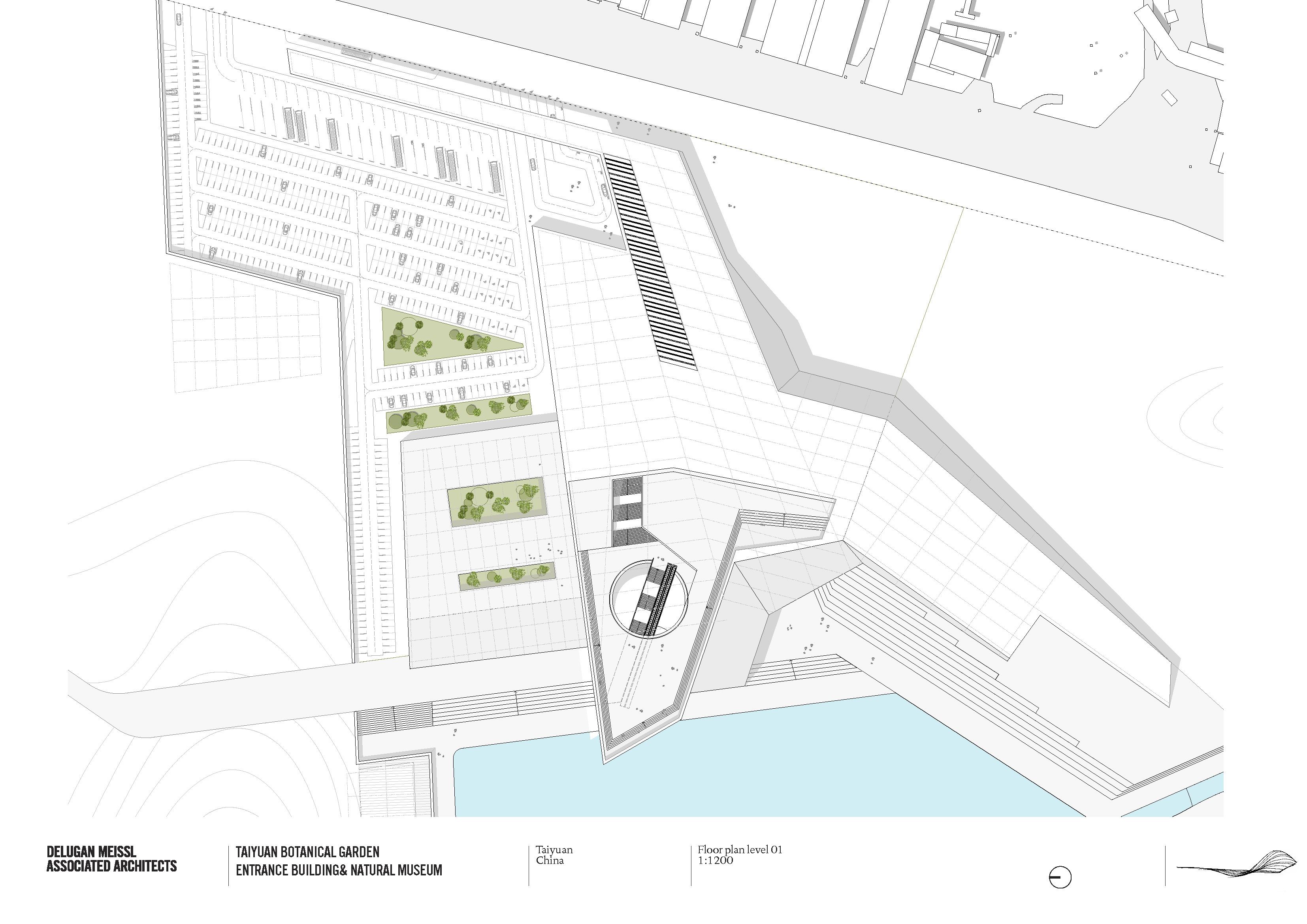

完整项目信息
Category: Landscape, Museum, Restaurant
Address: Jinyuan District, Taiyuan City, China
Start of planning: 2015
Completion: 2021
Gross surface area: 54.600 m²
Construction volume: 329.861,00 m³
Site area: 182 hectares
Project manager: Sebastian Brunke, Diogo Teixeira
Project team: Maria Dirnberger, Volker Gessendorfer, Bernd Heger, Tom Peter-Hindelang, Klara Jörg, Rangel Karaivanov, Leonard Kern, Kinga Kwasny, Toni Nachev, Martin Schneider, Petras Vestartas
Client: Botanical Garden Taiyuan
CONSULTANTS
Coordination: Yiju Ding
Architecture Executive planning: Institute of Shanghai Architectural Design & Research (Co.,Ltd.)
Structural engineering: Bollinger + Grohmann Ingenieure
Structural engineering: Timber structures: StructureCraft
Façade: Bollinger + Grohmann Ingenieure
HVACR/ Electrics: Cody Energy Design
Landscape Architecture: Beijing BLDJ Landscape Architecture Insitute Co.,Ltd.
Landscape Design Greenhouse: Valentien+Valentien Landschaftsarchitekten und Stadtplaner SRL
Photographer: CreatAR Image
版权声明:本文由Delugan Meissl Associated Architects授权发布。欢迎转发,禁止以有方编辑版本转载。
投稿邮箱:media@archiposition.com
上一篇:如恩新作:福州茶馆
下一篇:汤姆·梅恩:中国正见证一场建筑变革 | 有方专访